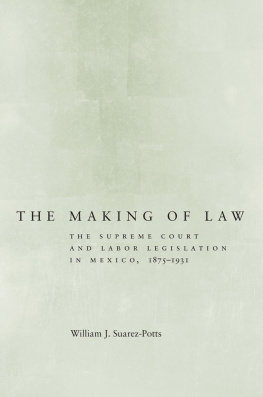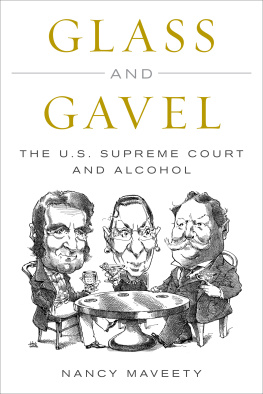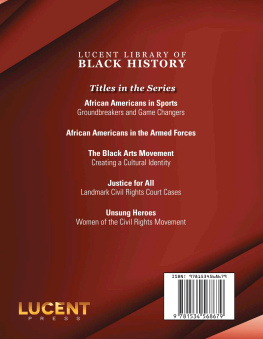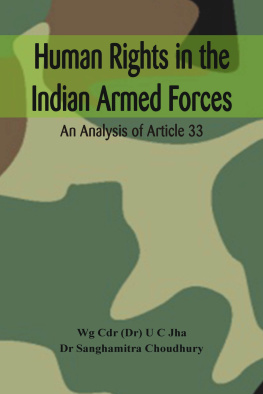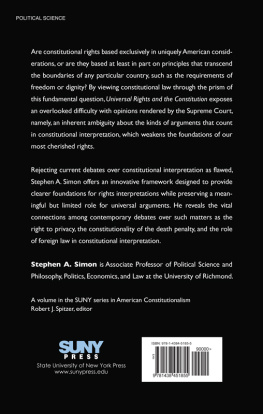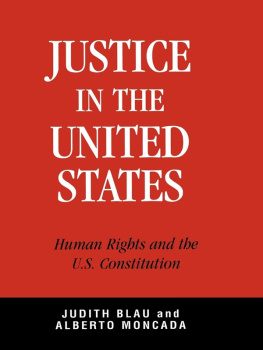2013 by the University of New Mexico Press
All rights reserved. Published 2013
Printed in the United States of America
18 17 16 15 14 13 1 2 3 4 5 6
The Library of Congress has cataloged the printed edition as follows:
James, T. M. (Timothy M.)
Mexicos Supreme Court : between liberal individual rights and revolutionary social
rights, 18671934 / Timothy M. James.
pages cm
Includes bibliographical references and index.
ISBN 978-0-8263-5378-8 (cloth : alk. paper)ISBN 978-0-8263-5379-5 (electronic)
1. MexicoSuprema Corte de JusticiaHistory. 2. Constitutional courts
MexicoHistory. 3. Civil rightsMexicoHistory. 4. Social rightsMexico
History. 5. MexicoPolitics and government18671910. 6. MexicoPolitics and
government19101946. I. Title.
KGF2530.J345 2014
347.7203509034dc23
2013011565
Acknowledgments

This book, a history of constitutional rights and their judicial interpretation by Mexicos Supreme Court from the Restored Republic to the Maximato, could not have been written without access to the Supreme Courts historical archive. I am indebted to Jorge Flores for providing this access and to his staff for locating hard to find materials and providing me with a space to work. I was also aided by the librarians and archivists of four other institutionsthe Procuradura General de la Repblica, the Escuela Libre de Derecho, the Archivo General de la Nacin, and the Biblioteca Central Silvestre Moreno Corawhose collections were indispensable for the research that went into this book. In addition, I would like to thank Norma Mereles de Ogarrio for granting me access to the Fideicomiso Archivos Plutarco Elas Calles y Fernando Torreblanca in Mexico City. I would also like to thank Linda Arnold and Alejandro Mayagoitia, knowledgeable scholars in the field of Mexican legal history who generously shared with me their private collections and considerable knowledge of Mexican law.
I owe a special debt of gratitude to the late Friedrich Katz, whose memory lives on in all of those who had the pleasure of working with him. My own interpretation of the Mexican Revolution has very much been shaped by his two histories of the Mexican RevolutionThe Secret War and The Life and Times of Pancho Villaas well as a third book project on the Revolutionary leader Francisco Madero, which Friedrichs untimely death in 2010 prevented him from finishing. I would also like to thank Kif Agustine-Adams, Luis Barron, Dain Borges, Jeffrey Bortz, Elizabeth Borgwardt, Carlos Bravo, Jason Dawsey, Michael Geyer, Charles Hale, Elizabeth Heath, Tamar Herzog, Susan Karr, Emilio Kouri, Mark Loeffler, Spencer Leonard, Claudio Lomnitz, Graciela Mrquez, Everard Meade, Pablo Mijangos, William Novak, Alejandra Nez Luna, Sarah Osten, Moishe Postone, Peter Reich, Colby Ristow, Paul Ross, Michael Scardeville, Ana Mara Serna, William H. Sewell Jr., Andrew Sloin, Laura Sour, Rob Stern, William Suarez-Potts, Paul Townend, Seoneid Valient, and Reuben Zahler. The usual caveats apply and I assume ultimate responsibility for any errors of fact or interpretation that the reader may find herein. Nonetheless, this book would have been a very different and less interesting work without the input from so many gifted scholars and mentors.
An earlier version of first appeared in English in Law and History Review, published by the University of Illinois Press, and I gratefully acknowledge their permission to use that material here.
For both his interest and help in preparing the final manuscript for publication, I would like to thank Clark Whitehorn of the University of New Mexico Press. Thanks also goes to Joy Margheim, Robert Landrum, and Carl Eby, all of whom read and commented on the final draft, as did Darby James, who has shared and lived with this project in all of its many incarnations. It would certainly never have been completed without her patience and understanding. My department chair at the University of South Carolina Beaufort, Babet Villena-Alvarez, supported this book with travel funds and course-release time. Questions related to Spanish translation were ably fielded by Leonor Teves Taylor. Research for this book was also generously funded by the Mellon Foundation. The debt I owe my parents for their support in this project as well as so many others can hardly be summarized here. It seems more than appropriate, especially as I look forward to the birth of my own first son, to dedicate this book to them.
Introduction
Mexico is not a country well known for its tradition of constitutional jurisprudence, and the Porfiriato, in particular, is considered a period when constitutional-rights protections on the books were systematically ignored in practice. Nonetheless, it was during the last third of the nineteenth century that a system of constitutional procedures protecting liberal individual rightsknown in Spanish as amparowas firmly established for the first time in Mexican constitutional law. This system was suspended for several years during the Mexican Revolution, was reincorporated largely unchanged into a new Revolutionary constitution in 1917, and was to have important consequences for the implementation of new socioeconomic rights in the period from 1917 to 1934.
The Constitution of 1917 is best known for these new social rights, specifically the agrarian and labor provisions to be found in articles 27 and 123. Article 27 protected the right to property but established new limits, including the need to divide large landed estates and provide land for the landless. Article 123 created a set of far-reaching protections for workers and their families, including a mandated day of rest, minimum-wage provisions, employer liability for work accidents, the recognition of unions, and the right to strike. Indeed, there is not a single history of the Mexican Revolution that has not weighed in on the question of the relationship of articles 27 and 123 to the legitimacy of the new Revolutionary regime.
If in this respect this bookwhich also takes up the question of articles 27 and 123traverses well-traveled ground, it nonetheless aims to offer fresh insights through the adoption of a new perspective, that of Mexican legists deciding and litigating constitutional cases. Its main innovation over previous accounts, then, is its use of jurisprudential sourcesthat is, the resolutions of federal tribunals, as well as the writings and commentaries of jurists and other legal professionals. This shift in source base allows for a new interpretation of Mexicos Revolutionary Constitution of 1917 and the history of socioeconomic rights in particular.



